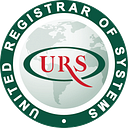Navigating EMI and EMC Testing Labs and Ensuring Electronic Device Compliance
Electromagnetic interference (EMI) and electromagnetic compatibility (EMC) are critical considerations in the design and manufacturing of electronic devices. EMI/EMC testing labs play a vital role in ensuring that products comply with international standards for electromagnetic emissions and immunity.
This guide delves into the functions of EMI and EMC testing labs, what tests they perform, and why they are crucial for maintaining the integrity and functionality of electronic devices in a globally connected world.
Role of EMI/EMC Testing Labs
EMI/EMC testing labs specialize in assessing electronic devices to ensure they neither emit excessive electromagnetic interference nor are overly susceptible to external electromagnetic sources. By adhering to regulatory standards, these labs help manufacturers avoid costly compliance failures and market delays. The goal is to certify products that are both safe and effective in their electromagnetic environment, ensuring they perform as intended without causing or experiencing unacceptable interference.
Key Functions of EMI/EMC Testing Labs
The core responsibilities of these labs include a range of tests designed to evaluate the electromagnetic characteristics of electronic devices:
- EMI Testing: Determines the amount of electromagnetic noise a device emits. This is crucial because excessive noise can interfere with other devices, potentially causing them to malfunction.
- EMC Testing: Assesses the device’s ability to operate as intended when exposed to common electromagnetic disturbances, such as radio frequency transmissions or electrical surges.
- Immunity Testing: Similar to EMC testing, this evaluates a device’s ability to function correctly in the presence of various electromagnetic disturbances.
The Importance of EMI/EMC Testing
EMI/EMC testing labs are critical for several reasons:
1. Compliance with Regulations: Many countries have strict regulations governing electromagnetic emissions and immunity. Testing labs ensure that products meet these regulatory standards, such as those set by the Federal Communications Commission (FCC) in the U.S. or the European Union’s CE marking requirements.
2. Prevention of Operational Failures: By ensuring devices can operate in their intended environments without interference, manufacturers can prevent failures that might occur due to electromagnetic disturbances.
3. Market Access: Compliance with international standards opens up global markets for manufacturers, as many regions require EMI/EMC testing certificates as part of the product approval process.
How EMI/EMC Testing Labs Operate
The testing process in these labs typically involves several stages:
1. Pre-Testing Consultation: This initial phase involves understanding the device’s design and identifying the applicable standards based on the device’s intended market and function.
2. Testing Execution: Devices undergo rigorous testing in controlled environments that simulate various electromagnetic conditions. This includes both emissions and immunity tests.
3. Data Collection and Analysis: During testing, labs collect comprehensive data to analyze how well the device adheres to international standards.
4. Detailed Reporting: After testing, labs provide a detailed report that outlines how the product performed, including any compliance issues and suggestions for improvement.
5. Certification: If the device meets all required standards, the lab issues a certification that can be used to show compliance with regulatory bodies and market requirements.
